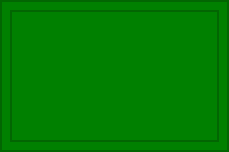 W
WThe 4th Canadian Armoured Brigade was an armoured brigade formation of the Canadian Army during World War II.
 W
WThe 7th Battalion, CEF was a battalion of the Canadian Expeditionary Force that saw service in the First World War. It was created on 2 September 1914 with recruits from British Columbia. The battalion set off for England on board the Virginian berthed in Quebec. They arrived in England on 14 October 1914 with a strength of 49 officers and 1083 men. The battalion became part of the 1st Canadian Division, 2nd Canadian Infantry Brigade where it saw action along the Western Front. The battalion returned to Canada on 18 April 1919, was demobilized on 25 April 1919, and disbanded soon after.
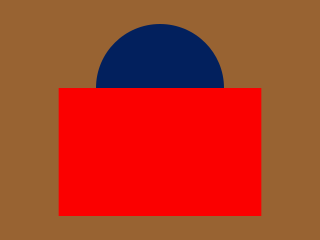 W
WThe 14th Battalion, CEF was a battalion of the First World War Canadian Expeditionary Force.
 W
WThe 148th Battalion, CEF was a unit in the Canadian Expeditionary Force during the First World War. Based in Montreal, Quebec, the unit began recruiting in late 1915 in that city and the surrounding district. After sailing to England in September 1916, the battalion was absorbed into the 20th Reserve Battalion on January 8, 1917. The 148th Battalion, CEF had one Officer Commanding: Lieut-Col. A. A. Magee.
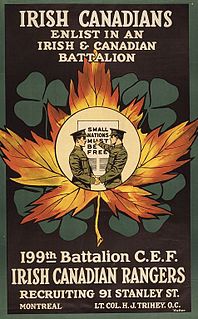 W
WThe 199th Battalion, CEF was a unit in the Canadian Expeditionary Force during the First World War.
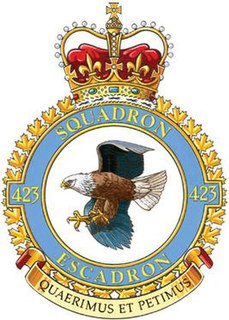 W
W423 Maritime Helicopter Squadron is a unit of the Canadian Forces under Royal Canadian Air Force. It currently operates the Sikorsky CH-148 Cyclone from CFB Shearwater in Nova Scotia, Canada.
 W
WThe Breskens Pocket was a pocket of fortified German resistance against the Canadian First Army in the Battle of the Scheldt during the Second World War. It was chiefly situated on the southern shore of the Scheldt estuary in the southern Netherlands, near the Belgian border. It was named after the town of Breskens, which was later freed from German occupation during Operation Switchback.
 W
WThe Canadian Automobile Machine Gun Brigade, also known as Brutinel's Brigade or the Brutinel Brigade, was the first fully motorized unit of the Canadian Expeditionary Force. It was established on August 24, 1914 in Ottawa, Ontario, Canada, as Automobile Machine Gun Brigade No. 1 by Canadian Brigadier-General Raymond Brutinel, who initiated the program and was the unit's first commander. The unit played a significant part in halting the major German Spring Offensive of March 1918.
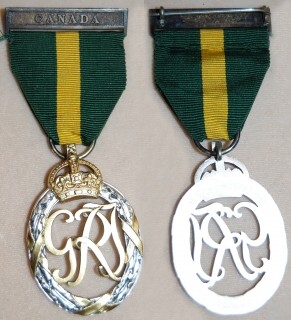 W
WThe Canadian Efficiency Decoration (ED) was a Canadian military award given to officers of the Non-Permanent Active Militia, RCAF Auxiliary and Reserve who completed twenty years of meritorious military service. Similar Efficiency Decorations were also awarded by other Commonwealth countries. A bar was issued for an additional 20 years of meritorious service. Approximately 3,700 medals were issued.
 W
WThe Canadian Light Horse (CLH) was a cavalry regiment of the Canadian Expeditionary Force during the First World War. The CLH was formed as the Canadian Corps Cavalry Regiment in May 1916, by the amalgamation of three divisional cavalry squadrons: the 1st Divisional Cavalry Squadron, the 2nd Divisional Cavalry Squadron, and the 3rd Divisional Cavalry Squadron. In March 1917 the regiment was renamed the Canadian Light Horse.
 W
WCanadian propaganda during World War II(1939–45) was used to increase support for the war and commitment to an Allied victory. It was marked by the extensive use of radio and films, which had become popular since the First World War.
 W
WRoyal Canadian Air Force Station Yorkton was a Long Range Radar (LRR) and Ground Air Transmitter Receiver (GATR) facility of the Pinetree Line. The site was SAGE compatible from day one. It was located near Yorkton, Saskatchewan, Canada.
 W
WThe Battle of Eccles Hill or was part of a raid into Canadian territory from the United States led by John O'Neill of the Fenian Brotherhood. In 1870, the Fenians crossed the just south of the Canada-United States border and proceeded to the top of Eccles Hil where they were confronted by members of the Canadian home guard and volunteers. This conflict was initiated by a group of Irish patriots exiled to the United States to start a revolutionary movement for Ireland's independence. The army of the Fenian Brotherhood was overwhelmed by local militia units and armed citizens on May 25, 1870. They were compelled to abandon what was anticipated to have been a " glorious victory " for the Fenians.
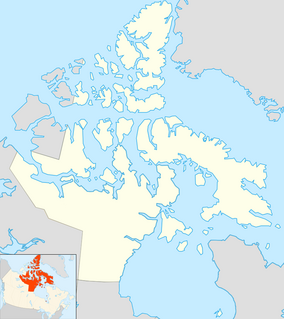 W
WEnnadai is a former populated place in Kivalliq Region, Nunavut, Canada. Located on a peninsula that juts into northeastern Ennadai Lake it faces an unnamed island. It is 250 mi (400 km) northwest of Churchill, Manitoba and 650 mi (1,050 km) west of Arviat. Ennadai and the surrounding area has been the traditional home of Ihalmiut, a Caribou Inuit band.
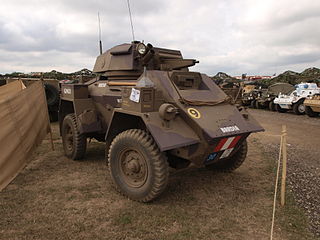 W
WThe Fox Armoured Car was a wheeled armoured fighting vehicle produced by Canada in the Second World War.
 W
WCFB Griesbach was an army base that was located in the north end of Edmonton, Alberta, Canada. The site was named after Major-General William Antrobus Griesbach (1878–1945), a veteran of the Second Boer War, the First World War and the Second World War. Griesbach was also an Edmonton alderman and mayor, and served as a Member of Parliament and a Senator.
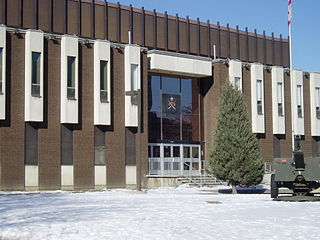 W
WMoss Park Armoury is a Canadian Forces facility located at 130 Queen Street East in Toronto, Ontario, Canada. It is at the northeast corner of Jarvis Street and Queen Street East, in the neighbourhood of Moss Park. It currently hosts several units of the Primary Reserve. More than 600 soldiers and reservists train at Moss Park every week.
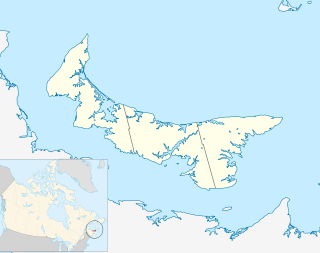 W
WRCAF Station Mount Pleasant was a Royal Canadian Air Force (RCAF) station in Mount Pleasant, Prince Edward Island, Canada. Two of its runways remain in use by members of the Experimental Aircraft Association.
 W
WNo. 4 Squadron was a Royal Canadian Air Force squadron that was active before and during the Second World War. It was formed on 17 January 1933 at RCAF Station Jericho Beach and flew civil operations until 1939, conducting forestry, customs and fishing patrols as well as aerial photography. On 1 January 1938, it was redesignated a General Reconnaissance squadron but continued with the same aircraft, but began training for war operations.
 W
WNo. 11 Squadron RCAF was a Royal Canadian Air Force squadron that was active during the Second World War. It was primarily used in an anti-submarine role and was based on the east coast of Canada and Newfoundland. It was initially formed at RCAF Station Ottawa before moving to Dartmouth, Nova Scotia on 3 November 1939, where it became operational. From 26 October 1943 to 17 June 1944, it operated from Torbay, Newfoundland before returning to Halifax for a year, before again moving, across the country to Patricia Bay, British Columbia on 31 May 1945. The squadron flew the Lockheed Hudson and Consolidated Liberator maritime patrol bombers before disbanding on 15 September. The unit's first operational flight, on 10 November 1939, was to provide sighting practice for the anti-aircraft guns of the Royal Navy battlecruiser HMS Repulse and aircraft carrier HMS Furious, as well as for the Halifax, Nova Scotia shore batteries.
 W
WNo. 145 Squadron was a Royal Canadian Air Force squadron that was active during the Second World War. It was primarily used in an anti-submarine role and was based on the east coast of Canada and Newfoundland. The squadron flew the Lockheed Hudson and Lockheed Ventura before disbanding on 30 June 1945.
 W
WNo. 164 Squadron was a transportation squadron of the Royal Canadian Air Force that formed at Moncton, New Brunswick in January 1943. It was the primary source of crews and aircraft for airlift within Canada.
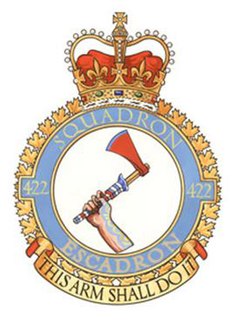 W
WNo. 422 Squadron RCAF was a unit of the Royal Canadian Air Force, formed during World War II.
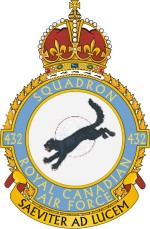 W
WNo. 432 Squadron RCAF was a squadron of the Royal Canadian Air Force formed during the Second World War.
 W
WOperation Echo was the codename given by the Canadian Forces for its air activities during the Kosovo War in 1999. In support of the NATO Operation Allied Force Canadian aircraft based at Aviano Air Base in northeastern Italy flew bombing missions over the Balkans.
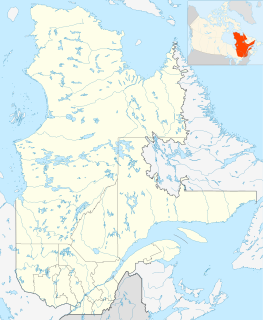 W
WRCAF Mont Apica was a radar station of the Pinetree Line, located in Mont-Apica, Quebec, Canada, during the Cold War. The station opened in 1952 and had a staff of some 500 persons at its peak.
 W
WThe Royal Canadian Air Force Police was responsible for military police functions for the Royal Canadian Air Force (RCAF).
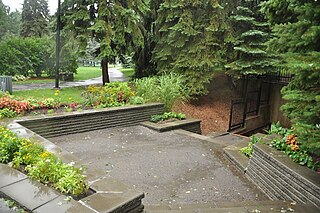 W
WThe Saint-Leonard Cavern or la caverne de Saint-Léonard is a cave on the island of Montreal, in Quebec, Canada. It is located underneath Pie XII Park in the borough of Saint-Leonard in Montreal. It is a registered historic site with restricted access and guided tours.
 W
W"We Shall Keep the Faith" is a poem penned by Moina Michael in November 1918. She received inspiration for this poem from "In Flanders Fields". The "poppy red" refers to Papaver rhoeas.